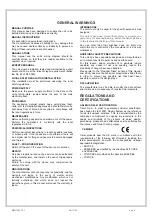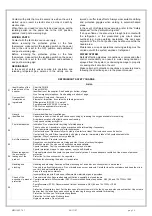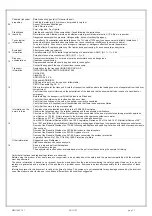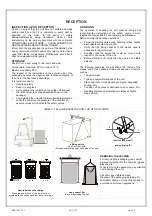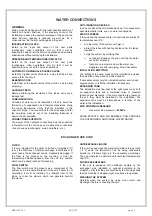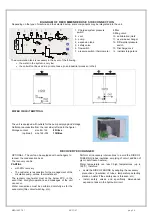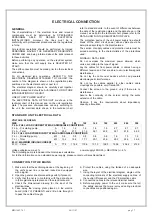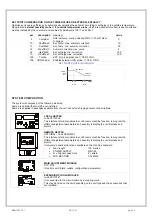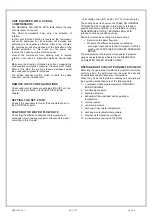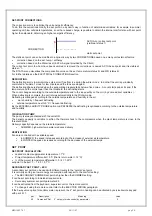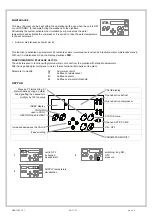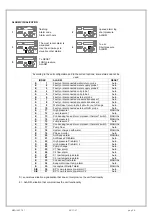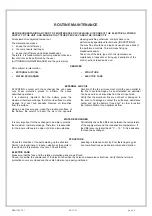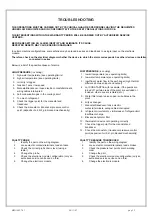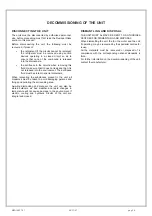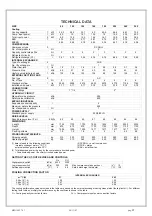
M0G140F7-01 06/11/07
pag
22
UNIT EQUIPPED WITH SCROLL
COMPRESSORS
The GENERAL TECHNICAL DATA table shows the type
of compressor on the unit.
The Scroll compressors have only one direction of
rotation.
In the event that the direction is reversed, the compressor
will not be damaged, but its noisiness will increase and
pumping will be negatively affected. After a few minutes,
the compressor will stop because of the activation of the
thermal protection. In this event, cut the power and
reverse the 2 phases on the machine power.
Prevent the compressor from working with in reverse
rotation: more than 2-3 anomalous starts up can damage
it.
Make sure the direction of rotation is correct, measure the
condensation and suction pressure. Pressure must clearly
differ: at the start, the suction pressure decreases whilst
the condensation pressure increases.
The phase optional monitor, which controls the phase
sequence, can be installed later.
REMOTE INPUT CONFIGURATIONS
Check used remote inputs are activated (ON-OFF etc.) as
given in the instructions in the ELECTRIC WIRING
chapter.
SETTING THE SET-POINT
Check if it is necessary to modify the set-points shown in
the CONTROL chapter
EVAPORATOR WATER FLOW RATE
Check that the difference between the temperature of
exchanger return and supply water corresponds to power
according to this formula:
unit cooling power (kW) x 860 = Dt (°C) x flow rate (L/h).
The cooling power is shown in the TABLE ON GENERAL
TECHNICAL DATA included in this manual, referred to
specific air/water conditions, or in the tables on cooling
PERFORMANCE IN THE TECHNICAL BULLETIN
referred to various conditions of use.
Check for water side exchanger pressure drops:
•
Determine the water flow rate.
•
Measure the difference in pressure between
exchanger input and output and compare it with the
graph on WATER SIDE EXCHANGER PRESSURE
DROPS.
The measurement of pressure will be easier if pressure
gauges are installed as indicated in the DIAGRAM OF
SUGGESTED WATER CONNECTIONS .
REFRIGERANT CIRCUIT PARAMETER CHECK
Detecting the operational conditions is useful to control the
unit along time: the performed records must be kept and
be available during maintenance interventions.
When the unit works in stable conditions and according to
the operating limits, take note of the following data:
1. compressor diacharge temperature (WARNING –
BURN DANGERI)
2. condensing
pressure
3. liquid
temperature
4. dehydrator
filter
upstream and downstream
temperature
5. return
pressure
6. return
temperature
7. exchanger input water temperature
8. exchanger
output
water temperature
9. external air temperature (coil input)
10. air temperature coming out from fans

